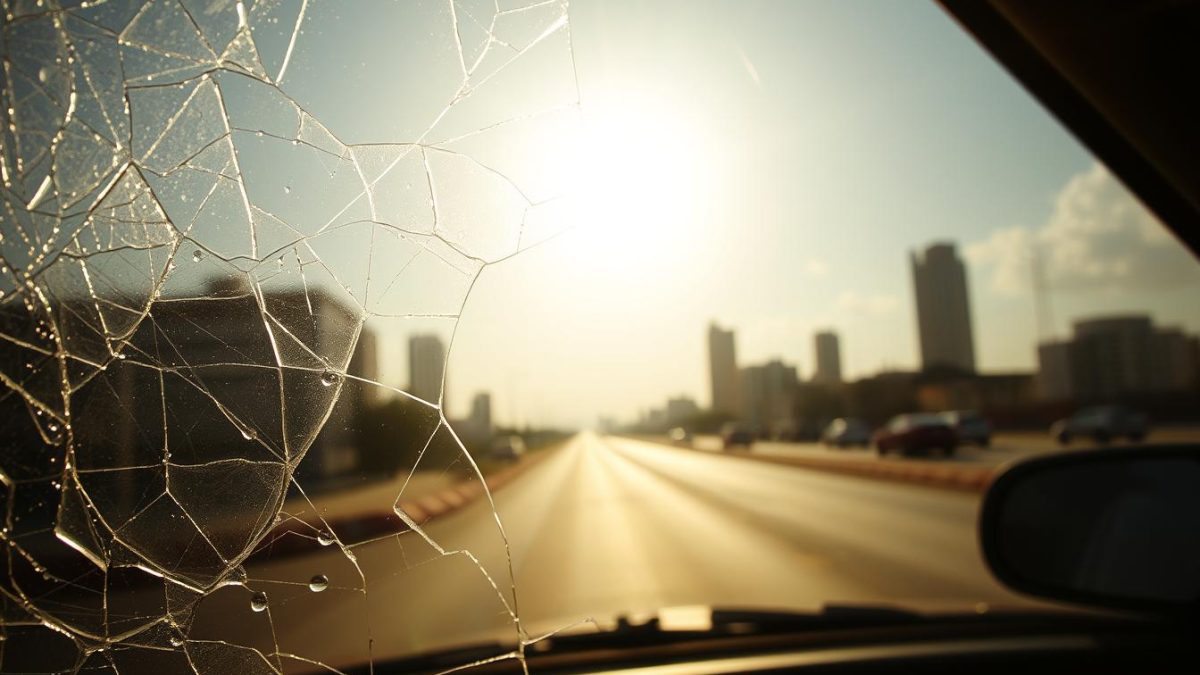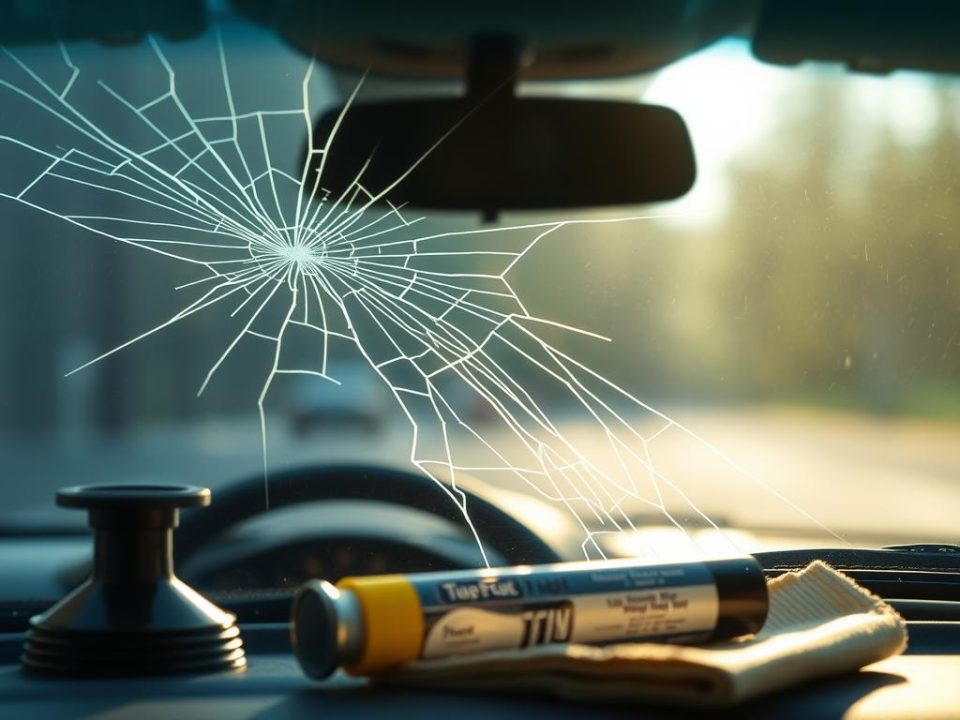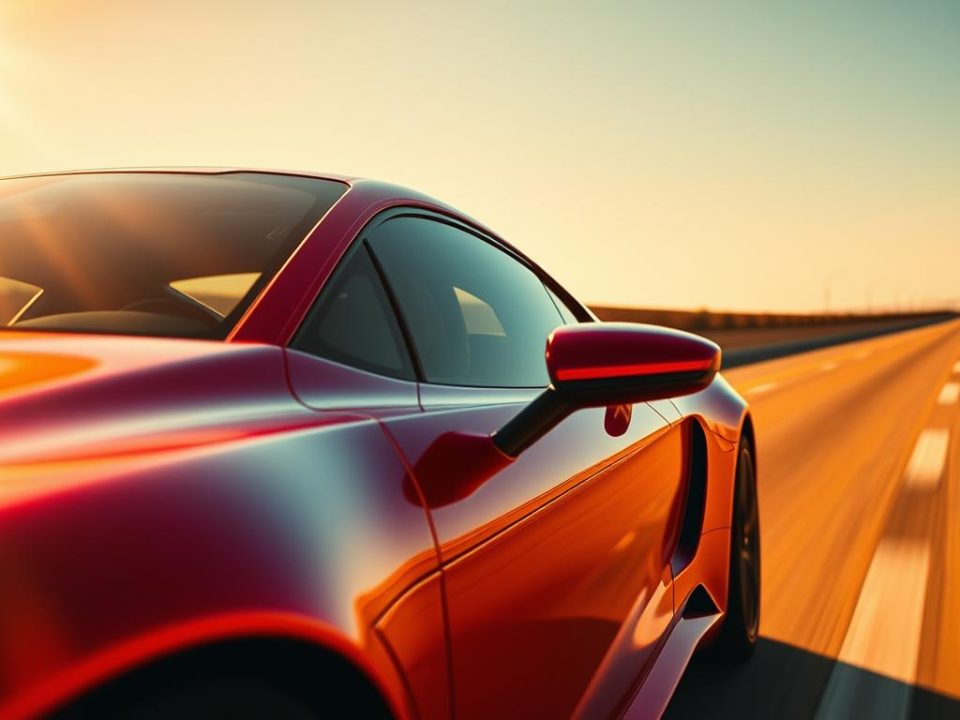
What a Lifetime Windshield Warranty Really Means for San Antonio Drivers

Restoring Classic Cars? Don’t Ignore the Importance of the Right Glass
The scorching heat in San Antonio poses significant risks to vehicles, particularly affecting auto glass components exposed to harsh elements. As climate change intensifies, the frequency and intensity of heat waves are on the rise.
With temperatures regularly reaching 97-101°F and a UV index of 10-11 out of 11, the unique weather conditions in San Antonio create specific challenges for windshields and other auto glass. Understanding how these conditions affect your auto glass can help prevent costly repairs and maintain vehicle safety.
Experts at Miracle Auto Glass have seen firsthand how extreme heat can damage auto glass. This article will explore the science behind heat-related damage and provide practical solutions to mitigate the risks associated with San Antonio’s extreme climate.
Key Takeaways
- Extreme heat in San Antonio poses significant risks to auto glass.
- Understanding the effects of heat on auto glass can help prevent costly repairs.
- Miracle Auto Glass provides expert solutions to mitigate heat-related damage.
- San Antonio’s weather conditions create unique challenges for vehicle owners.
- Preventative measures can be taken to maintain vehicle safety and integrity.
San Antonio’s Extreme Climate
San Antonio is projected to face increasingly extreme heat days, affecting the integrity of auto glass. By 2050, residents are expected to experience an average of about 47 days per year with temperatures over 100.8°F.
- Extreme temperature variations, with summer highs often exceeding 100°F for extended periods.
- A unique climate pattern where intense heat waves can last for weeks, stressing vehicle components.
- High UV radiation levels, reaching a UV index of 10-11 during summer.
The combination of direct sunlight, reflected heat from roads, and ambient temperature creates a triple threat to auto glass integrity. As the area continues to experience more extreme heat days, the risk to vehicles increases.
Understanding Auto Glass Composition
The composition of auto glass plays a crucial role in determining its durability under various environmental conditions, including those found in San Antonio.
Modern auto glass is designed with multiple layers, including glass and plastic interlayers, to withstand various stresses. However, it has specific vulnerabilities, particularly to extreme temperatures. The materials expand and contract with change in temperature, creating microscopic stress points.
- Windshields consist of two glass layers with a plastic interlayer to prevent shattering.
- Side and rear windows are made of tempered glass that crumbles into small pieces when broken.
- San Antonio’s extreme conditions accelerate the aging process of auto glass components, increasing the risk of damage.
Understanding auto glass composition helps explain why Miracle Auto Glass recommends specific repair approaches for heat-related damage.
The San Antonio Weather Impact on Vehicles
The extreme weather conditions in San Antonio have a profound effect on the durability of auto glass. San Antonio’s weather creates a perfect storm of conditions that accelerate wear and damage to vehicle exteriors.
Key Factors Contributing to Auto Glass Damage:
- Intense direct sunlight and reflected heat from roadways subject vehicles to thermal stress throughout the day.
- Vehicles parked outside during peak heat hours (typically 1-5 PM) can experience interior temperatures exceeding 150°F.
- Rapid heating and cooling cycles create thermal shock that weakens glass over time.
- Local driving conditions, including construction zones and gravel roads, compound heat-related stress with increased risk of impact damage.
The combination of these factors over time increases the risk of damage to auto glass in the San Antonio area.
How Extreme Heat Affects Windshields
The scorching heat in San Antonio poses a significant risk to vehicle windshields. Extreme heat causes windshield glass to expand, putting pressure on existing chips or cracks, often causing them to spread rapidly.
- The adhesive bonding the windshield to the vehicle frame can weaken under prolonged heat exposure.
- San Antonio’s intense sunlight accelerates the degradation of the plastic interlayer between glass layers.
- Temperature differentials between the outside and inside of the vehicle create stress that can cause small imperfections to develop into larger cracks.
- Windshields in San Antonio vehicles often experience premature aging due to the combination of heat, UV exposure, and rapid temperature change common in the local conditions.
These factors highlight the importance of maintaining your windshield in extreme heat to prevent further damage.
Temperature Fluctuations and Glass Expansion
In San Antonio, the extreme temperature fluctuations pose a significant risk to auto glass integrity. The change in temperatures causes auto glass to expand and contract. Here are the key effects:
- Auto glass expands when heated and contracts when cooled, accumulating microscopic stress over time.
- In San Antonio, daily temperature fluctuations can exceed 20 degrees, testing auto glass structural limits.
- Rapid cooling of hot glass can create thermal shock, potentially cracking the glass.
Vehicle owners should be cautious, especially during seasonal transitions when temperature fluctuations are extreme and unpredictable, often occurring over several days.
UV Radiation Damage to Auto Glass
San Antonio’s intense sunlight poses a significant risk to auto glass integrity. The city’s extreme UV radiation levels, often reaching 10-11 on the UV index, accelerate the degradation of auto glass components over time.
- Prolonged exposure to UV radiation causes the plastic interlayer in laminated windshields to break down chemically.
- The edges of auto glass where it meets the frame are particularly vulnerable to UV damage.
- UV radiation works synergistically with heat to accelerate damage, creating a compound effect that’s particularly severe in San Antonio’s climate year after year.
Modern vehicles often include UV-protective coatings on glass, but these protective layers themselves degrade over time when exposed to San Antonio’s intense sunlight.
Common Heat-Related Auto Glass Problems
Auto glass in San Antonio is susceptible to several heat-related problems due to the city’s climate. The extreme temperatures can lead to various issues that affect the integrity and functionality of vehicle glass.
Windshield Cracks and Chips
The intense heat can cause windshields to expand and contract, increasing the risk of cracks and chips. This thermal stress can weaken the glass over time, making it more vulnerable to damage.
Seal Deterioration
The rubber and urethane seals that hold auto glass in place are particularly vulnerable to heat-related deterioration. Prolonged exposure to high temperatures causes these seals to dry out, shrink, and crack, compromising their ability to keep water out of the vehicle. As a result, failed seals can allow water to penetrate during rain events, potentially causing interior damage and electrical issues.
The combination of UV radiation and heat accelerates the aging process of seals, with many San Antonio vehicles showing seal deterioration in half the time compared to vehicles in milder climates. Early signs of seal deterioration include whistling noises at highway speeds, water leaks during rain, or visible shrinking and pulling away from the glass edges. This change can lead to significant problems if not addressed promptly.
The Danger of Small Chips in San Antonio Heat
San Antonio’s scorching heat poses a significant risk to vehicle owners with small chips in their windshields. The intense heat can cause these chips to expand rapidly.
- Small chips can spread into major cracks within days when exposed to San Antonio’s summer heat.
- The expansion of glass under heat creates pressure that forces microscopic damage to expand rapidly.
- Vehicle owners in San Antonio face higher chances of minor damage escalating to require full windshield replacement if repairs are delayed.
The safety implications of spreading cracks include compromised structural integrity and visual obstruction. 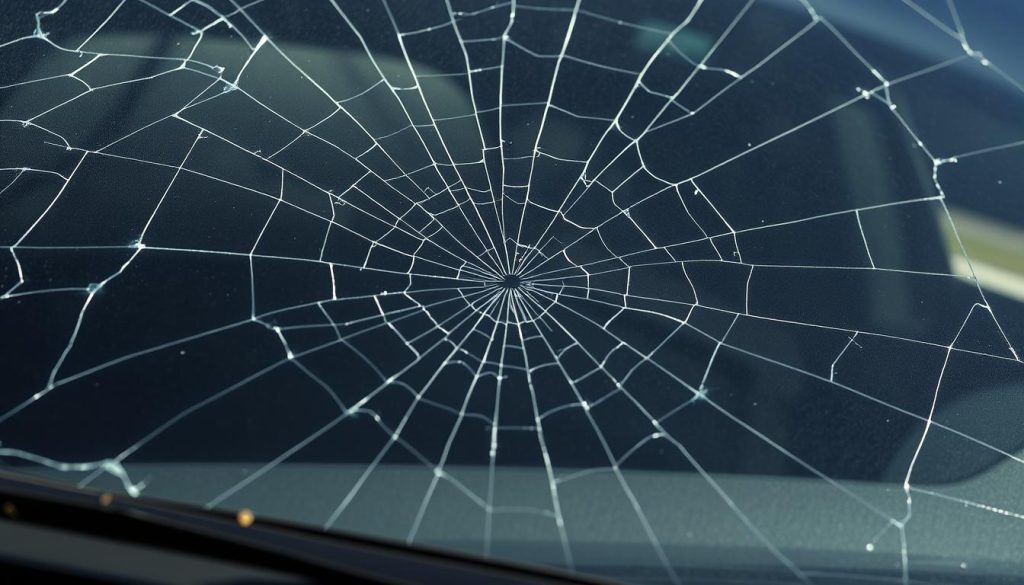
Miracle Auto Glass technicians observe that repair success rates drop dramatically for chips left exposed to multiple days of San Antonio heat before repair is attempted. Prompt action can mitigate the risk of further damage.
How Drought Conditions Affect Your Auto Glass
San Antonio’s drought-prone climate poses unique challenges for auto glass maintenance. The Upper San Antonio watershed has experienced drought conditions for 63% of weeks since 2000.
Drought leads to drier, dustier conditions, increasing airborne particulates that cause micro-abrasions on windshields. This weakens the glass surface and increases the risk of damage.
- Drought conditions create additional stresses on auto glass beyond direct heat exposure.
- Lack of regular rainfall means dirt and contaminants remain on glass surfaces longer.
- Drought increases fire risk, with smoke particulates potentially damaging auto glass.
Over 753 weeks since 2000, San Antonio has been in some level of drought, affecting auto glass durability.
Seasonal Weather Changes and Glass Stress
As San Antonio experiences its characteristic seasonal transitions, auto glass components face unique challenges. The city’s weather change from cool mornings to hot afternoons during spring and fall creates extreme daily temperature fluctuations, putting maximum stress on glass integrity.
San Antonio’s seasonal rainfall patterns mean that vehicles may go weeks without rain exposure, then suddenly experience heavy downpours on hot glass surfaces, increasing the risk of damage. Vehicle owners should be vigilant about auto glass condition during these transitions.
- Distinct seasonal transitions create unique stress patterns for auto glass.
- Rapid temperature shifts during spring and fall put maximum stress on glass.
- Seasonal rainfall patterns increase the risk of damage.
Preventing Heat Damage to Your Auto Glass
To mitigate the risk of heat damage to your auto glass in San Antonio, it’s essential to adopt preventive measures. By taking proactive steps, you can reduce the chances of damage caused by the intense sunlight.
Parking Strategies
One effective way to prevent heat damage is by using smart parking strategies. Parking your vehicle in shaded areas or using a sunshade can significantly reduce the temperature inside your vehicle, thereby minimizing the risk of auto glass damage. This simple step can help protect your windshield from the harsh San Antonio sun.
Protective Measures
Applying a quality UV-protective film to your auto glass can significantly reduce heat absorption and UV damage. Regularly cleaning your windshield with a microfiber cloth and applying rain repellent treatments can also help. At Miracle Auto Glass, professional-grade protective treatments are available, specifically formulated for San Antonio’s climate conditions, to provide superior protection against heat damage and improve water shedding during storms.
When to Repair vs. Replace Heat-Damaged Glass
Like a fire that spreads quickly, heat damage to auto glass can rapidly escalate if not addressed promptly. In San Antonio, understanding the risk and chances of repair versus replacement can save vehicle owners significant time.
Miracle Auto Glass technicians assess damage to determine if repair is viable or if replacement is necessary.
- Small chips and short cracks can often be repaired.
- Damage in the driver’s line of sight may require replacement.
- Edge cracks that compromise the windshield’s integrity typically necessitate full replacement.
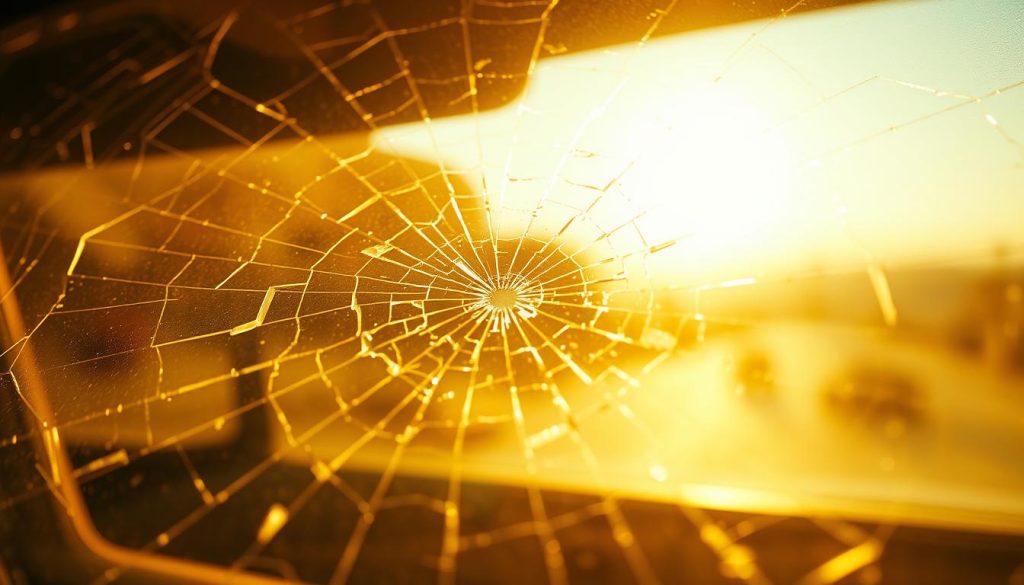
Professional Auto Glass Services in San Antonio
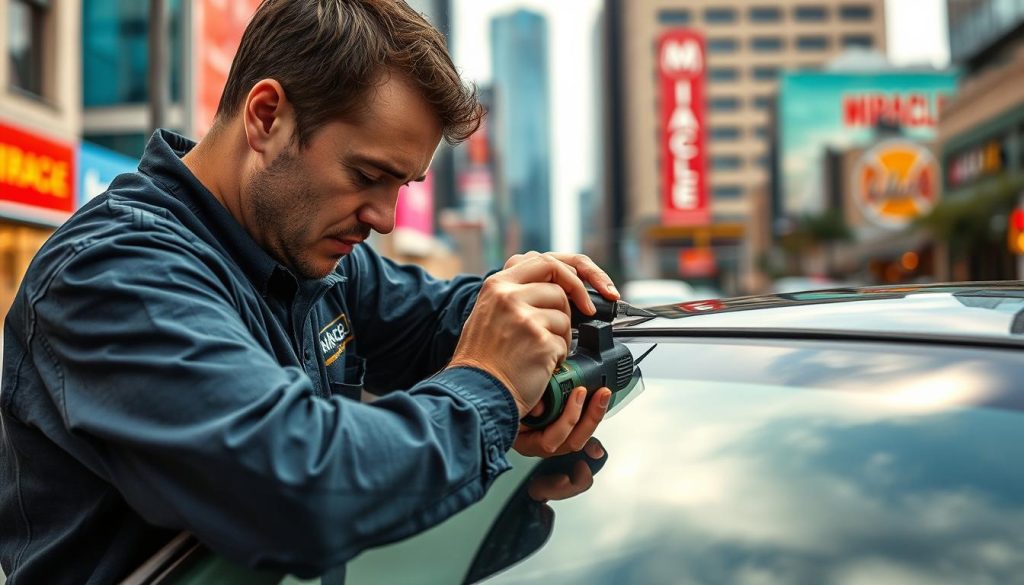
Miracle Auto Glass provides expert services tailored to the unique challenges faced by vehicle owners in San Antonio. Certified technicians understand the specific stress patterns and damage progression common to vehicles in the area.
- Professional auto glass services specialize in addressing local climate conditions.
- Mobile service options bring repairs directly to homes or businesses.
- Professional-grade materials and techniques withstand San Antonio’s extreme conditions.
- Insurance coordination services help navigate coverage questions.
By choosing Miracle Auto Glass, vehicle owners can ensure their auto glass is repaired or replaced with high-quality materials and techniques, mitigating the risk of further damage.
Why Choose Miracle Auto Glass for Heat-Related Damage
For residents of San Antonio, the intense heat can be a major factor in auto glass deterioration. Miracle Auto Glass specializes in addressing the unique challenges that San Antonio’s climate presents for vehicle glass components. Their technicians receive specialized training in heat-related damage patterns and repair techniques specific to the local area.
- Uses premium materials engineered to withstand extreme temperature fluctuations.
- Has developed repair protocols optimized for San Antonio’s climate conditions.
- Offers a comprehensive warranty that protects against future issues.
By choosing Miracle Auto Glass, vehicle owners in the San Antonio area can mitigate the risk of heat-related damage. With years of experience serving the community, they provide longer-lasting repairs that can withstand the intense heat and UV exposure year-round.
Conclusion
Auto glass in San Antonio faces distinct risks due to the area’s extreme heat and weather fluctuations. Preventative measures and prompt repairs are crucial to maintaining vehicle safety and integrity. By understanding the science behind heat-related glass damage, vehicle owners can take proactive steps to mitigate risks. Don’t let San Antonio’s heat compromise your vehicle’s safety; contact Miracle Auto Glass today for expert repair or replacement services.

